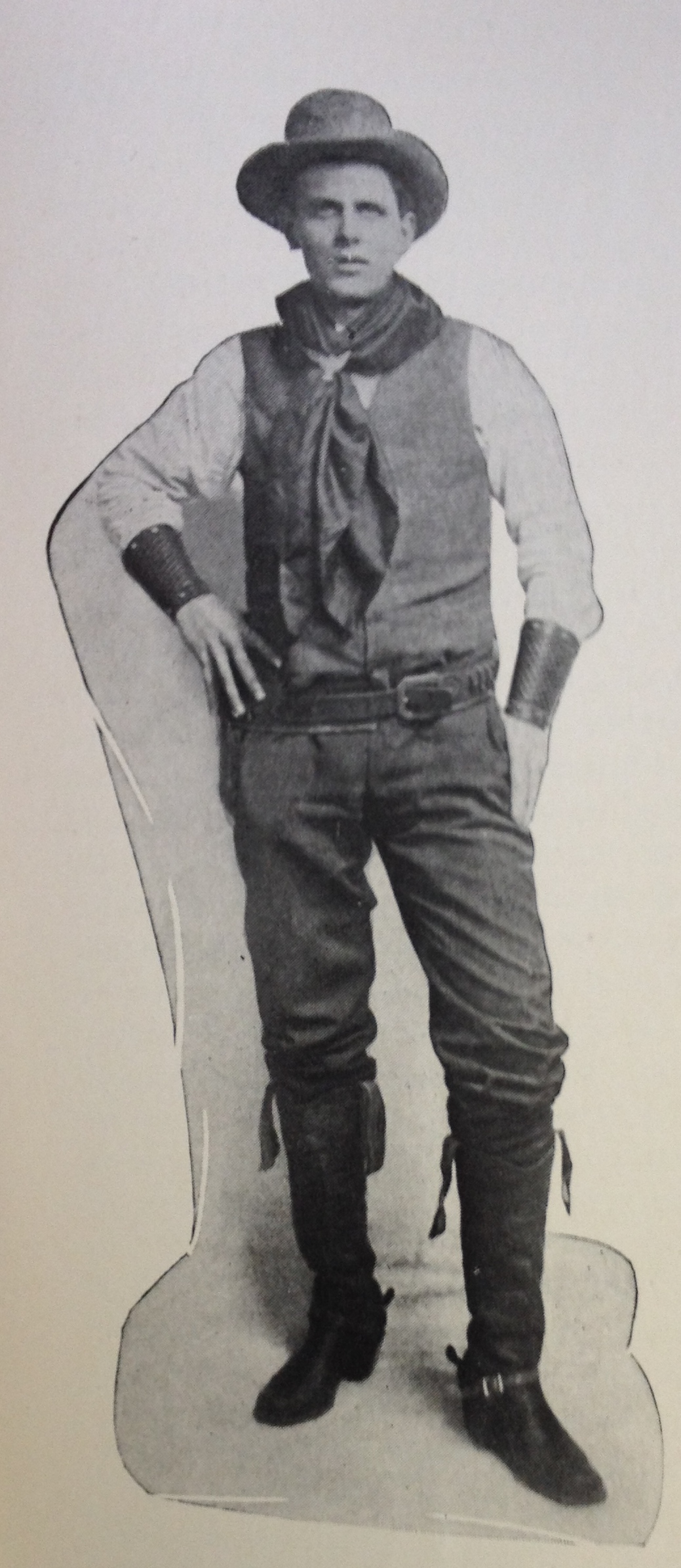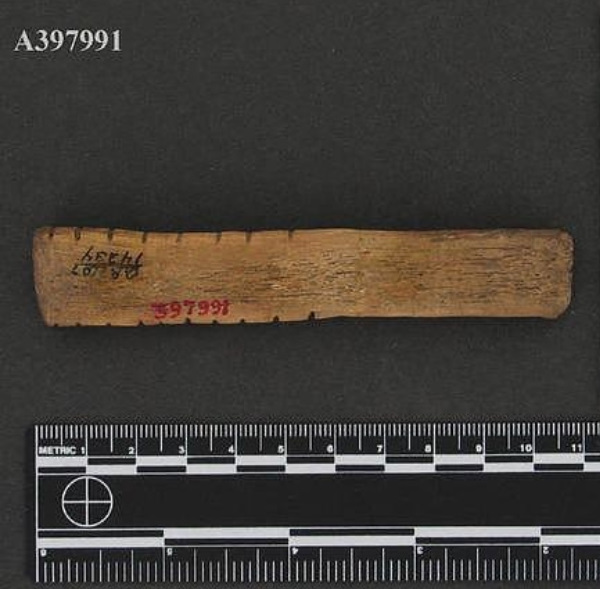 Always love seeing the life-size diorama of the Lamoka Lake site, representing the Archaic Period, at the New York State Museum in Albany. Based, of course, on Ritchie’s excavations at the site, the man in the center is wearing one of the enigmatic antler pendants from the site as, yes, a pendant. He also has a bone-handled knife at his waist, is carrying a fishing net with netsinkers, and wears a shell bead necklace (Ritchie actually thought the shell beads found at the site were associated with the later Woodland occupation). In the background, you can see a fish weir across the narrow channel between the two lakes (there is no direct evidence for weirs at the site) and fish drying racks (some post molds from the site were interpreted this way).
Always love seeing the life-size diorama of the Lamoka Lake site, representing the Archaic Period, at the New York State Museum in Albany. Based, of course, on Ritchie’s excavations at the site, the man in the center is wearing one of the enigmatic antler pendants from the site as, yes, a pendant. He also has a bone-handled knife at his waist, is carrying a fishing net with netsinkers, and wears a shell bead necklace (Ritchie actually thought the shell beads found at the site were associated with the later Woodland occupation). In the background, you can see a fish weir across the narrow channel between the two lakes (there is no direct evidence for weirs at the site) and fish drying racks (some post molds from the site were interpreted this way).
M.R. Harrington’s Expedition Wear, c. 1920s.
 The always fascinating Mark Raymond Harrington, archaeologist, anthropologist, and #jazzageadventurer modeling his exploring outfit for Museum Service, the bulletin of the Rochester Municipal Museum.
The always fascinating Mark Raymond Harrington, archaeologist, anthropologist, and #jazzageadventurer modeling his exploring outfit for Museum Service, the bulletin of the Rochester Municipal Museum.
Mr. Harrington, soon after his academic work at Ann Arbor and Columbia began to explore the out-of-the-way places of America and has been remarkably successful.
On the 2014 New York State Archaeological Association Meeting
Ed Curtin has posted a brief summary of some of the papers presented at the recent NYSAA meeting on his Fieldnotes blog.
Zooarch Papers Published, and They’re Open Access
The journal Assemblage has just published the Proceedings of the Postgraduate Zooarchaeology Forum held at the University of Sheffield in 2012. All eight papers can be freely downloaded at the Assemblage website.
All but one of the papers deal with Old World assemblages. The exception is Sofia Tecce’s analysis of animal bones from Estancia Pueyrredón 2 in Argentina. This hunter-gatherer site dates to between 4,900-3,500 BP (yes, roughly the same time period as the Lamoka Lake site). The faunal assemblage is dominated by guanaco (although there are also a lot of unidentified rodents) and Tecce present a pretty comprehensive taphonomic analysis of the guanaco bones.
Publication of these papers is notable for another reason. As the editors, Lizzie Wright and Angela Trentacoste point out, the organizers
…had no funding for this conference, but charged our participants just £10, in the knowledge that many postgraduates are limited by financial constraints. The Sheffield Zooarchaeology team hosted (sometimes multiple) participants in their homes. It is worth mentioning the real lack of opportunities for funding an event such as this – postgraduate conference funding was cut by the Arts and Humanties Research Council in recent years, and The University of Sheffield had no appropriate money that we could apply for. This is a real problem when postgraduates often have little funding themselves.
“diffuse the spectacle of de-extinction”?
A recent editorial in PLOS Biology is asking, but not really answering, some important questions:
Making De-Extinction Mundane?
Passenger Pigeon bones in West Virginia
A brief summary of known prehistoric records of Ectopistes in West Virginia has been posted in the Passenger Pigeon Archaeology section. There must be more sites out there with these bird bones – where are they?
irregular and uncertain intervals
Their appearance and disappearance is at very irregular and uncertain intervals
James E. DeKay on the “wild pigeon” in Zoology of New-York, or the New-York fauna; comprising detailed descriptions of all the animals hitherto observed within the state of new-york, with brief notices of those occasionally found near its borders, and accompanied by appropriate illustrations. Part II Birds. Carroll and Cook, Albany, NY. 1844, p. 197.
Olduvai Landscape, Layer by Layer
Mauricio Anton’s artwork of the Olduvai Gorge landscape, not quite two million years ago:
Worked Antler Artifact from Lamoka Lake

In 1950, the Rochester Museum of Arts and Sciences donated several modified bone and antler artifacts from the Lamoka Lake Site to the Smithsonian Institution. One of them was the artifact above (Accession No. A397991), made from a white-tailed deer or possibly elk (wapiti) antler.
William Ritchie, in his 1932 report, considered this and other artifacts like it as possible pendants, amulets, or tally sticks. They may also have had a more practical use. Some antler artifacts from the site were also decorated with red ochre stripes. To my knowledge, these artifacts have not been studied by anyone else since the original analysis by Ritchie in the 1920s.
Circa 4,500 year old Trackway in Ireland?
Around the same time native Americans were living at the Lamoka Lake site, Celts in Ireland were building a trackway, or wooden road, over the bogs near Galway Bay. That’s based on an estimated date between 3,500 and 4,500 years ago; it appears no radiocarbon dating has been conducted yet.
Discoverer Alan Keogh “had heard about the drowned forest and recognised the significance of what appeared to be a ‘symmetrical structure’ below a line of peat.”
According to Geologist Mike Williams “It could have been built during the late Neolithic or early Bronze age era, and may have been ceremonial or may have been built across wetland which was decaying forest, forming into bog.”
Another wooden artifact, the Bearna canoe, was found in the same part of Ireland several years ago and has been dated to 4,740 years ago.
“The canoe was freshwater, and these people used them for fishing and as a form of transport – like our stand-up paddle-boards.”